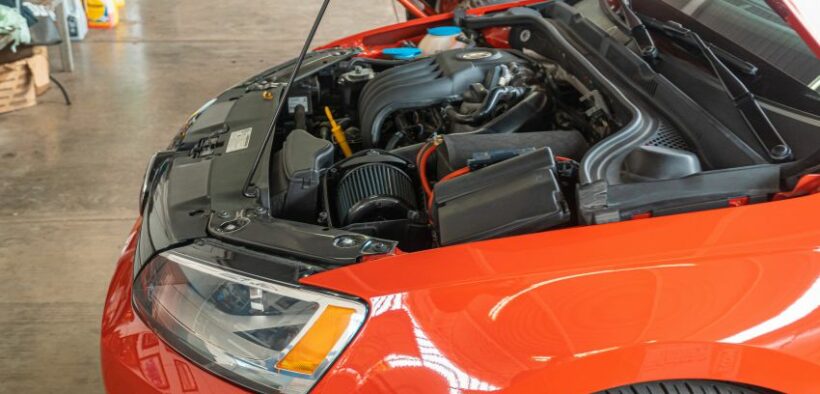Navigating the Maze: Unraveling the Mysteries of Engine Vapor Lock

Ever heard the term “vapor lock” and found yourself lost in the labyrinth of automotive jargon? You’re not alone. Thousands scour the internet monthly, seeking answers and finding a mishmash of information. Vapor lock may seem like the boogeyman of automotive problems, but it’s real, and it might just throw a wrench into your plans. Let’s dive into the fascinating world of engine vapor lock, the elusive troublemaker that can bring your car to a screeching halt when you least expect it.
What is Vapor Lock
Engine vapor lock, in essence, is the mischievous transformation of liquid gasoline into vapor before its scheduled time. While modern fuel-injected cars grapple with this phenomenon, older carbureted vehicles have a historical tryst with vapor lock. Picture this: the fuel, on its journey from the tank to the carburetor, decides to switch from liquid to gas prematurely. It’s like a siphon break, leaving your engine gasping for fuel. Diagnosis gets trickier with electronic fuel injection (EFI), as these systems are designed to thwart vapor lock. But when it strikes, your journey comes to an abrupt halt, leaving you stranded.
Identifying Vapor Lock
Before devising a cure for vapor lock, recognizing its symptoms is paramount. Hot weather and bumper-to-bumper traffic create the perfect storm for vapor lock symptoms – think rough-running, stumbling, and stalling when you hit the throttle. These warning signs are more prevalent in scorching weather, higher altitudes, or gridlocked traffic. Winter fuels in the summer heat can also trigger vapor lock during hot starts. Electronic Fuel Injection (EFI) cars face the challenge when the fuel tank is running on fumes.
The Heat Factor
At its core, engine vapor lock is a dance with heat, turning the once liquid fuel into a rebellious gas that refuses to reach the carburetor or fuel injectors. Engine tweaks pushing the fuel system beyond its limits, especially in vintage cars, can provoke vapor lock. Upgrades like freer-breathing induction or exhaust components might bring you face-to-face with this pesky issue. Trips to higher altitudes in the summer or a bout of sediment in the fuel system can also trigger a vapor lock. Carbureted vehicles bear the brunt, as fuel is drawn over a considerable distance from the gas tank.
The Boiling Point of Fuel
Blaming the fuel? Not entirely. Enter Reid Vapor Pressure (RVP), the chemical property responsible for a fuel’s evaporative tendencies. Measured in pounds per square inch, RVP gauges a fuel’s volatility – how easily it evaporates or boils. Higher RVP values, typical of winter gas, make fuel more susceptible to vapor lock. It’s a delicate balance, ensuring the fuel evaporates when needed while remaining liquid at all other times. Understanding RVP becomes crucial for troubleshooting, as various factors can mimic vapor lock symptoms.
Classic Cars and Vapor Lock
Classic and antique cars, often carbureted, bear the brunt of vapor lock. Pre-1980s, these vehicles with engine-mounted mechanical fuel pumps faced the challenge of siphoning fuel over a long distance, amplifying the risk of vapor lock. Age-induced wear and tear, modifications, or neglecting the fuel system’s needs can elevate the chances of vapor lock. The solution lies in strategic replacements and upgrades, ensuring the vintage charm doesn’t succumb to this modern-age troublemaker.
Vapor Lock in High-Performance Beasts
High-performance muscle cars, with their thirst for power, are not immune to vapor lock. The remedy involves a meticulous overhaul of the fuel system – upgrading pumps, fuel lines, and filtration. Thermal management becomes a critical aspect, necessitating insulation against heat sources. For these beasts, a cure is a more intricate dance, often involving collaboration with experts in thermal control and fuel systems.
As we conclude this journey into the realms of engine vapor lock, it’s evident that this automotive enigma is not reserved for the mechanically uninclined. From classic cars to high-performance marvels, vapor locks can strike unexpectedly. Armed with an understanding of its nuances, you can preemptively shield your ride from this disruptive force. Whether you’re cruising in a vintage beauty or unleashing the power of a high-performance machine, the lessons of engine vapor lock traverse the eras, reminding us that in the ever-evolving automotive landscape, knowledge is indeed horsepower.









